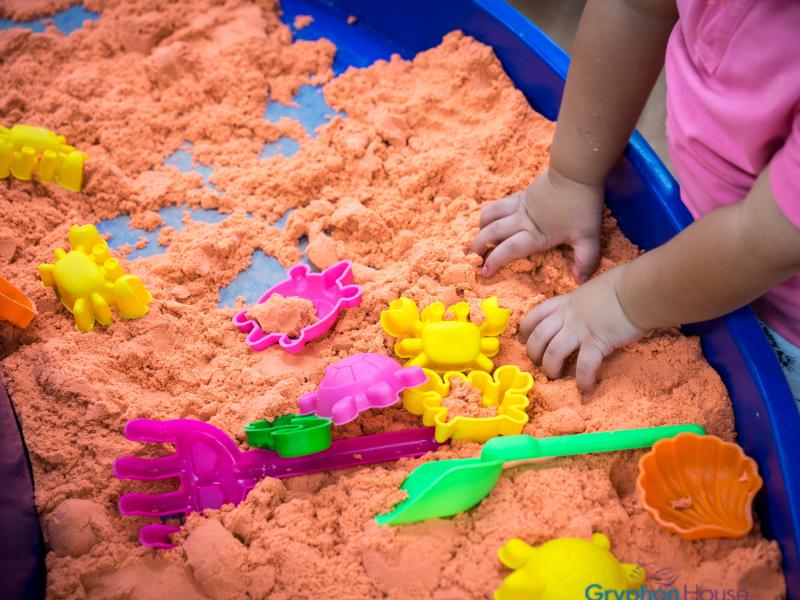A well-balanced child does more than simply sit at a desk to learn about the world while in the classroom. A well-balanced child’s development will incorporate a learning experience that incorporates creative play and hands-on experiences. The reasoning behind this is because children learn best when they can control and act upon their environment. Now, how can a classroom allow children to control and act upon their environment without the classroom becoming a mess? Different mediums, such as sand, water, clay, playdough, and so on, can all be placed in a sand and water table to give children the chance to see, touch, learn, and express themselves.
Sand and water tables are an inclusive environment, all children regardless of development or ability can benefit from its use. The inclusive nature of sand and water tables stems from the sensory motor quality of the tables, enabling children to release tension within the confines of a safe area. Sand and water tables also provide room for the development of new skills, which in turn boosts the confidence of a child. The benefits of a sand and water table are endless. Social development can take place at a water table when two children have a positive experience with one another. Also, the practice of new skills at the sand table can cause a child to have the confidence to try the skill in class during an activity. Sand and water tables have an exponential amount of uses and benefits.
Arts and Crats can often be incorporated with sand and water tables. One arts and crafts activity to try is:
Balls & Paint
- Objectives:
- Intellectual: Children will gain a better understanding of the components of art, such as line, design, creativity, and form.
- Emotional: Children will have a positive outlet for their emotions.
- Physical: Children will increase their eye-hand coordination skills.
- Materials:
- Paint smocks
- Butcher paper
- Tempera paper
- Water
- Container
- Variety of balls, such as bouncy balls, Ping-Pong balls, golf balls, magnetic balls, small plastic balls, and so on
- White construction paper
- Make sure the children wear paint smocks for this activity.
- Line the sand and water table with butcher paper.
- Put tempera paint in a container. Thin it with water.
- Place the balls into the paint.
- Encourage the children to roll and bounce the paint-covered balls back and forth to each other on top of the paper in the sand and water table.
- When a child is ready to make a print, place a sheet of white construction paper on top of the design made by the balls, press down, and carefully lift is. Ask the child, “What does it look like?”
- Open-Ended Questions:
- What are the other things you can do with the balls?
- What did you create? Tell me about it.
The Environment can often be incorporated with sand and water tables as well. One environment activity to try is:
Cars and Airplanes
- Objectives:
- Literacy: Children will expand their vocabulary and grammar by speaking in sentences, asking questions, and taking turns in conversation.
- Social: Children will pay attention and listen to other children’s ideas, make social initiations, and respect personal space.
- Materials:
- Sand or small rocks
- Plastic cars and trucks
- Airplanes
- Multicultural people figures
- Setting up the activity:
- Fill the sand and water table half full with sand or small rocks. Add cars, trucks, airplanes, and multicultural people figures to it and encourage the children to experiment.
- Tips:
- Allow the children to reject each other’s ideas and the teacher’s help with respect. Children will learn the skills to interact appropriately by using other children’s names, making eye contact, and touching the person respectfully.
- Open-ended questions:
- Who could you ask to play with you?
- Could you work together to solve the problem?

